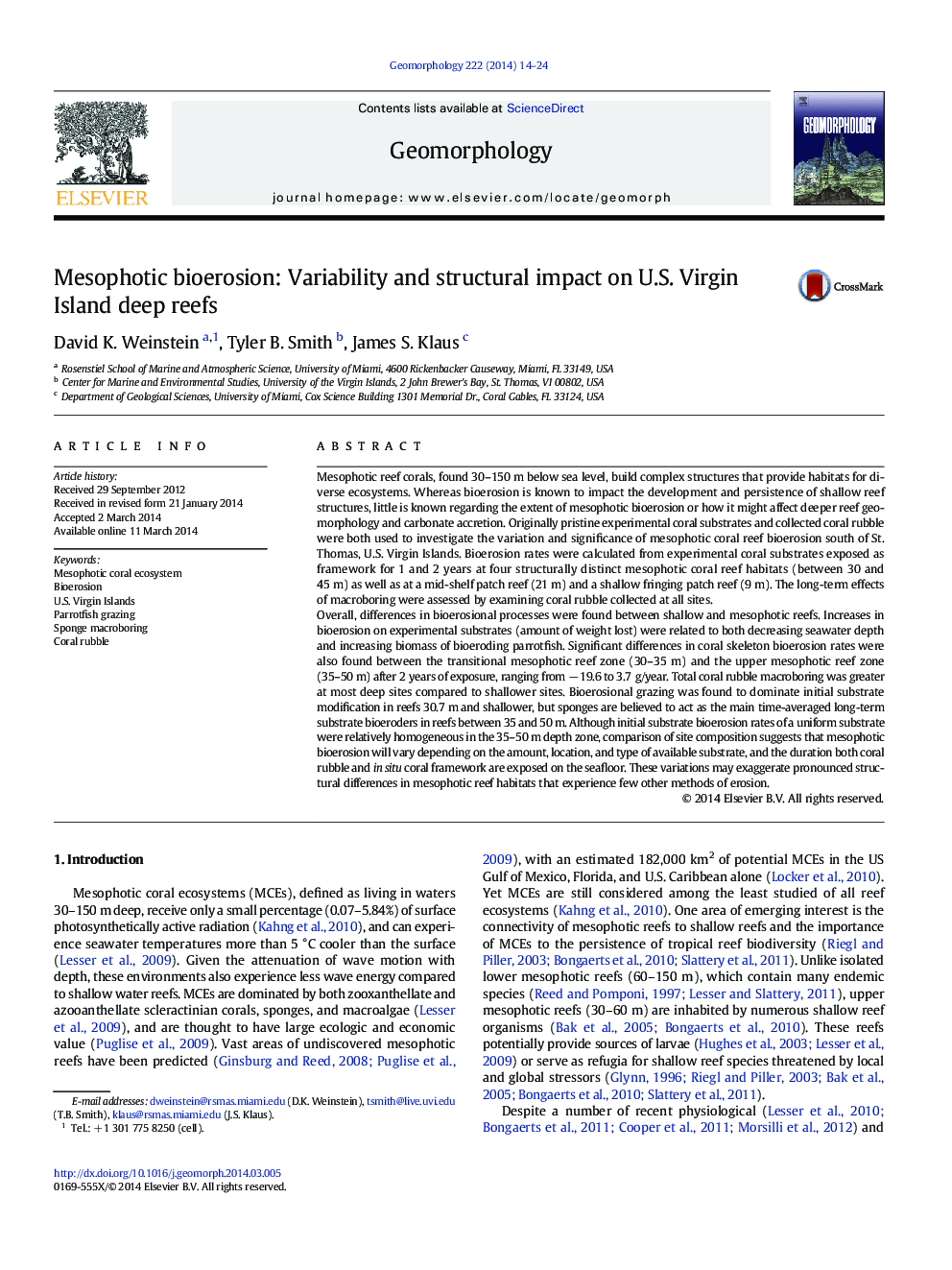| کد مقاله | کد نشریه | سال انتشار | مقاله انگلیسی | نسخه تمام متن |
|---|---|---|---|---|
| 6432406 | 1635427 | 2014 | 11 صفحه PDF | دانلود رایگان |

- Bioerosion rates are related to both parrotfish biomass and seawater depth.
- Bioerosion varies between structurally distinct mesophotic habitats.
- Grazing dominates bioerosion of shallow reefs and the shallowest mesophotic reef.
- Sponges are primary long-term substrate modifiers in the upper mesophotic zone.
Mesophotic reef corals, found 30-150 m below sea level, build complex structures that provide habitats for diverse ecosystems. Whereas bioerosion is known to impact the development and persistence of shallow reef structures, little is known regarding the extent of mesophotic bioerosion or how it might affect deeper reef geomorphology and carbonate accretion. Originally pristine experimental coral substrates and collected coral rubble were both used to investigate the variation and significance of mesophotic coral reef bioerosion south of St. Thomas, U.S. Virgin Islands. Bioerosion rates were calculated from experimental coral substrates exposed as framework for 1 and 2 years at four structurally distinct mesophotic coral reef habitats (between 30 and 45 m) as well as at a mid-shelf patch reef (21 m) and a shallow fringing patch reef (9 m). The long-term effects of macroboring were assessed by examining coral rubble collected at all sites.Overall, differences in bioerosional processes were found between shallow and mesophotic reefs. Increases in bioerosion on experimental substrates (amount of weight lost) were related to both decreasing seawater depth and increasing biomass of bioeroding parrotfish. Significant differences in coral skeleton bioerosion rates were also found between the transitional mesophotic reef zone (30-35 m) and the upper mesophotic reef zone (35-50 m) after 2 years of exposure, ranging from â 19.6 to 3.7 g/year. Total coral rubble macroboring was greater at most deep sites compared to shallower sites. Bioerosional grazing was found to dominate initial substrate modification in reefs 30.7 m and shallower, but sponges are believed to act as the main time-averaged long-term substrate bioeroders in reefs between 35 and 50 m. Although initial substrate bioerosion rates of a uniform substrate were relatively homogeneous in the 35-50 m depth zone, comparison of site composition suggests that mesophotic bioerosion will vary depending on the amount, location, and type of available substrate, and the duration both coral rubble and in situ coral framework are exposed on the seafloor. These variations may exaggerate pronounced structural differences in mesophotic reef habitats that experience few other methods of erosion.
Journal: Geomorphology - Volume 222, 1 October 2014, Pages 14-24